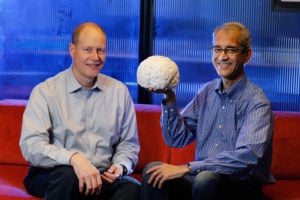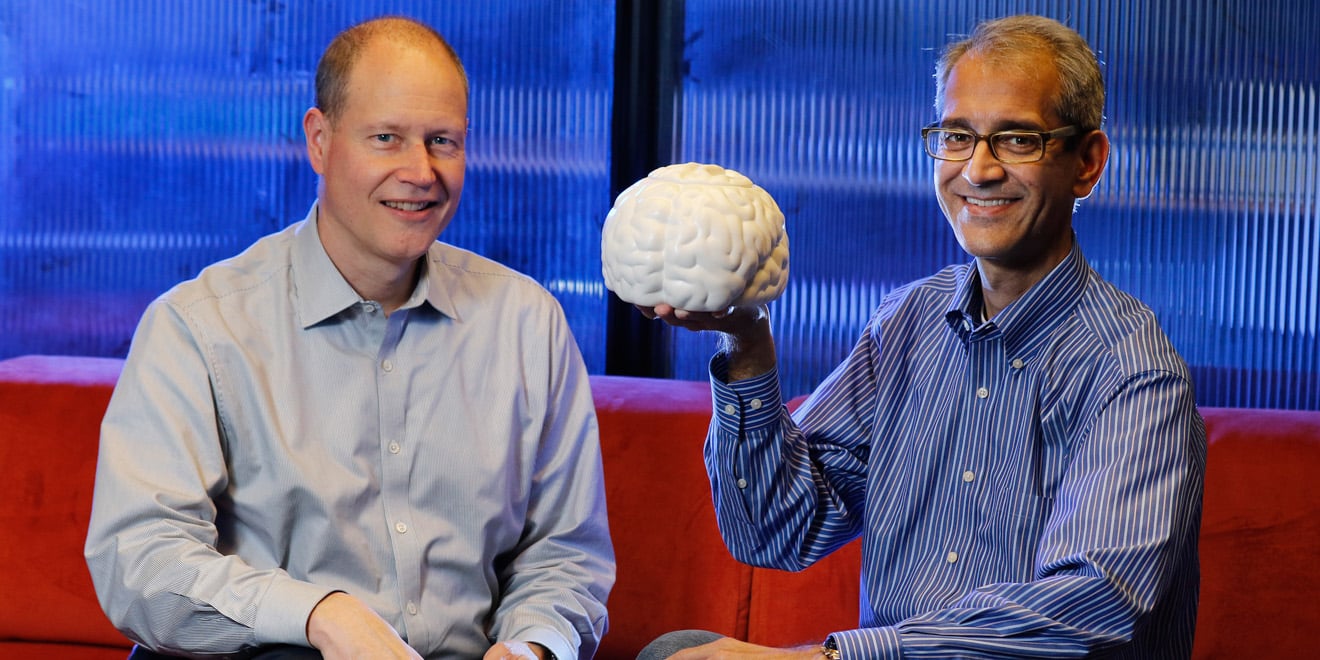
Stanford researchers have developed an experimental brain-controlled prosthesis that allows those with paralysis to communicate. The device, which transmits imagined movements onto a screen, could be a breakthrough for the paralyzed or otherwise severely movement-disabled.
The project is the result of 15 years of work by neuroscientist and Professor of Electrical Engineering Krishna Shenoy. It began with clinical trials on primates; Shenoy developed the prosthesis for human use in collaboration with neurosurgeon and John and Jene Blume – Robert and Ruth Halperin Professor Jaimie Henderson.
The project uses results from three paralyzed participants: two at the Stanford clinical site and a third at a site in Providence, Rhode Island. Henderson oversaw two implantations of the device in humans.
The ultimate goal of the project, restoring individuals’ ability to communicate, would benefit those suffering from such ailments as cervical spinal cord injury, brainstem stroke, muscular dystrophy and Lou Gehrig’s disease.
Paul Nuyujukian M.D. ’06 M.S. ’08 Ph.D. ’08 ’14, a postdoctoral scholar in neurosurgery and another major contributor to the project, described the primate trials, headed by Shenoy in Neural Prosthetic Systems Lab (NPSL), as integral to the development of the prosthesis.
“The clinical trial … was directly spawned off the promising results that we had from the non-human primate research, showing the potential for these types of interfaces,” Nuyujukian said.
While not the only ongoing clinical trial for such prosthesis technology, the Stanford team’s research is among the first. The trials are the result of a partnership with BrainGate, a research team that includes scientists, engineers and clinicians from universities across the country. The Stanford team was the second BrainGate trial site established.
The prosthesis itself is a tiny device that requires neurosurgery to implant. It can express the electrical signals of neurons as the movement of a cursor. The prosthesis records the voltage from individual neurons and detects a pattern through captured action potentials — explosions of electrical activity that send information out of a neuron. A computer then uses an algorithm to translate the pattern of action potentials to estimate the intention of the person wearing the device. The estimation is based on a “training set” of previously collected neural data describing movement.
In the primate trials, the comparison to a training set was relatively simple. Because the primates retained motor function, the action potential patterns of their neurons during movement could be easily recorded. With the human clinical trials, however, this option was not available, because participants were paralyzed. Nuyujukian says the Stanford researchers used a “quirk of physiology” to get around that fact.
“The sheer act of imagining the intention of movement — imagining that your arm is moving to the right or to the left, or up or down — causes similar patterns of activity in motor cortex as actually making that movement,” Nuyujukian said.
To exploit this quirk, the team had participants initiate their trials by watching the cursor play a game. Participants imagined that they were making the movements, which alone was enough to compile a training set.
Looking forward, Nuyujukian hopes that the efficiency and practicability of the prosthesis can be improved. He hopes to ensure the device becomes a clinical reality by making it wireless and fully implantable, among other modifications. He also hopes the technology will be able support robotic arms, 3D interaction and mobility aids such as wheelchairs.
“I would be remiss if I didn’t thank [the clinical trial participants] for their participation and their heroic contributions to science,” Nuyujukian added. “Understand that these are individuals … volunteered to participate in a clinical trial that has no [direct] benefit to themselves … We, both the researchers directly and all of science and medicine, owe brave people like them a huge debt of gratitude. Because it’s through their courage that science and medicine moves forward.”
Contact Matt Nissen at mnissen1 ‘at’ stanford.edu.
